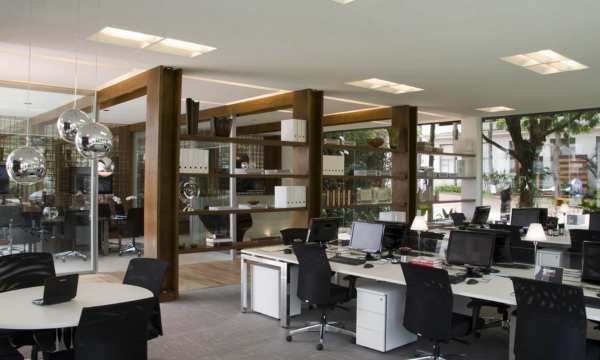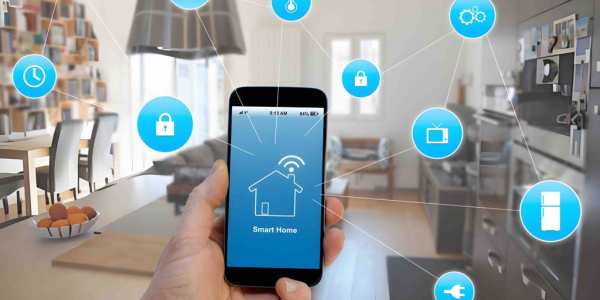Learn how smart lighting can completely transform your daily work life.
Ad
This amazing technology is not just a passing trend, but a revolution that is changing the way we interact with our professional spaces.
In fact, many people have yet to discover the fantastic potential that a well-planned system can offer.
Ad
Imagine the following situation: you arrive at the office in the morning, and automatically, your lights adjust to provide that extra energy you need to start the day.
Later, during an important meeting, the lighting adapts, creating the perfect environment to impress your colleagues.
Ad
Additionally, when you need to focus on that complex report, smart lighting provides exactly the ideal brightness to avoid visual fatigue.
In today’s article, you’ll discover everything you need to know to transform your work environment.
How Does Smart Lighting Work?
Let’s start with the basics: how exactly does this technology, which seems magical, work? Actually, it’s simpler than you might think, but at the same time incredibly sophisticated.
Smart lighting combines special LED bulbs with Wi-Fi or Bluetooth connectivity, allowing you to control everything through your smartphone.
Think of it as a constant conversation between your devices. Each bulb has a small electronic brain that receives and sends information instantly.
Consequently, you can adjust brightness, colors, and even create custom scenarios without even getting up from your chair. Now, what makes it even more interesting is the programming capability. You can teach your system to operate exactly as you like.
For instance, set the lights to turn on gently when you arrive at work or to gradually dim at the end of the workday. Additionally, integration with other smart devices opens up a world of possibilities, such as motion sensors.
Main Benefits for the Work Environment
Now that you understand how it works, let’s talk about what really matters: how it will improve your professional life. Scientific studies have shown that light quality directly impacts our productivity, mood, and even our health.
Controlling color temperature is, without a doubt, one of the most valuable features. In the morning, bluish tones help you stay alert and focused.
By the end of the day, warmer tones naturally prepare your body for rest. This way, you work in harmony with your natural biological rhythms.
Benefits you’ll quickly notice:
- Significant reduction in visual fatigue
- Noticeable increase in your productivity
- Fewer headaches related to inadequate lighting
- General feeling of well-being in the environment
Finally, let’s talk about savings. Smart lighting systems consume up to 80% less energy than traditional systems.
They also last much longer, meaning less maintenance and fewer replacements. Smart sensors prevent waste by automatically turning off lights in empty areas.
Types of Bulbs and Devices for Smart Lighting
Choosing the right devices might seem complicated at first, but it’s actually easier than it looks. The market offers options for all tastes and budgets, from basic solutions to highly advanced systems.
Smart LED bulbs are certainly the most popular entry point. They fit most fixtures you already have at home or in the office.
Basic models offer intensity control, while more advanced versions include millions of colors and music synchronization.
LED panels are excellent for offices that need uniform lighting over large spaces. They distribute light evenly and can simulate anything from natural light to specific settings for videoconferences.
Meanwhile, LED strips offer infinite creative possibilities, letting you highlight architectural elements or create cozier environments. Lastly, smart switches are a practical solution for those who want to start gradually.
They maintain the convenience of manual control while adding features like scheduling and remote control to your conventional bulbs.

Smart-office-lighting-(Source-Google)
Tips for Saving Energy with Smart Lighting
Did you know you can save even more energy with a few simple strategies? While smart lighting is already naturally efficient, there are tricks that can maximize your savings.
Smart scheduling is, without a doubt, your best ally. Set specific times aligned with your work routine.
For example, establish lower intensities during breaks and maximum during activities that require focus. This way, you only use the necessary energy for each moment.
Integration with natural light sensors is especially smart. On sunny days, the system automatically reduces artificial intensity, keeping the environment perfectly lit without waste.
Pre-set scenarios are another powerful tool:
- Create specific settings for meetings
- Solo work
- Breaks
- Cleaning
Each scenario uses just the right amount of light for that specific activity.
Furthermore, monitoring through apps lets you identify consumption patterns and make adjustments for maximum efficiency.
Traditional Lighting vs. Smart Lighting
Let’s do an honest comparison between the traditional system you probably use today and what smart lighting can offer. This comparison will help you understand exactly what you gain by making the switch.
| Feature | Traditional Lighting | Smart Lighting |
| Control | Manual, with switches | Remote via app, voice or automation |
| Energy Usage | High (40–100W/bulb) | Low (5–15W/bulb) |
| Durability | 1,000–2,000 hours | 25,000–50,000 hours |
| Initial Cost | Low | Medium to high |
| Customization | Limited | Full (color, intensity, temperature) |
| Automation | None | Scheduling and scenarios |
| Maintenance | Frequent replacement | Minimal maintenance |
| Integration | None | Connects with other devices |
Now that you have an idea of each system’s benefits and features, it’s easier to know which is the best option for you.
Trends in Lighting for Modern Offices
The future of smart lighting is even more exciting than you might imagine. Emerging technologies are set to completely transform our relationship with light in work environments.
Artificial intelligence is being incorporated to learn your usage patterns and automatically optimize settings.
Imagine a system that adjusts lighting based on your stress level, weather conditions, or even your daily schedule. This isn’t science fiction—it’s a reality that’s on its way.
Hybrid offices, which combine in-person and remote work, are driving the development of more flexible systems. Smart lighting allows for rapid reconfiguration of spaces to meet specific needs, adapting perfectly to this new reality.
Lastly, sustainability is a strong influence on future trends. New systems prioritize recyclable materials, greater energy efficiency, and integration with renewable energy sources.
Conclusion
As you’ve seen throughout this article, investing in smart lighting is much more than a technological upgrade—it is a complete transformation in the quality of your work environment.
Implementing these systems means having total control over one of the most important factors in your productivity and well-being.
To begin your transition to smart lighting, we recommend you assess your specific needs and implement it gradually. Start with strategic areas like your desk, then expand to the entire environment.
The initial investment will quickly pay off through energy savings and improvements in your work quality.



